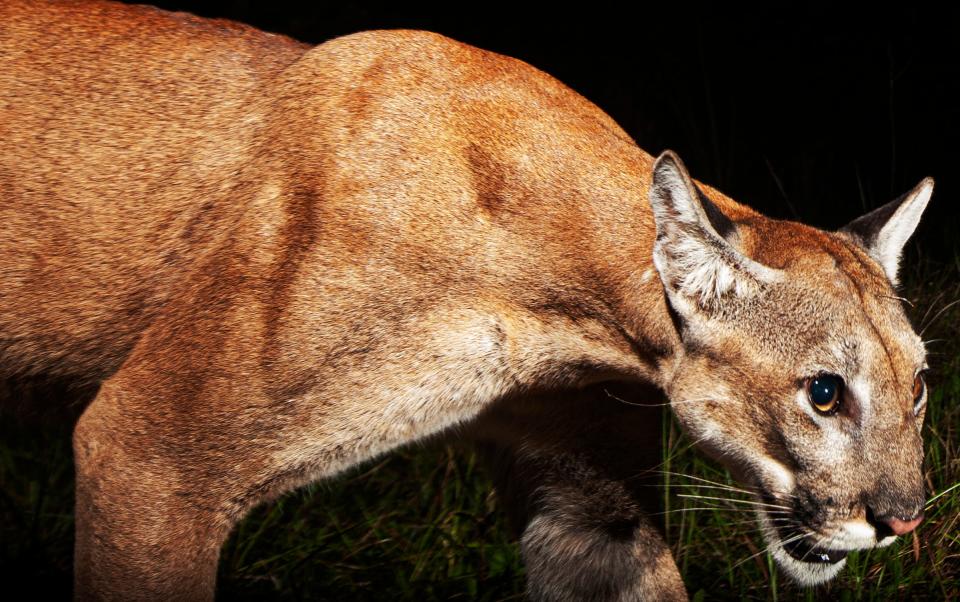Is there something in the water? Scientists suspect pollution impacting panthers
The hunt for the root of a mysterious disease that may be cutting short the Florida panther population continues as scientists and environmental groups search for answers.
The scariest part, some say, is that it may be a toxin coming from Florida's ailing waters.
"It's not a tick paralysis, it's not a virus, it's not from pesticides or rodenticides and it's not metabolic, so we do suspect it's something in the environment," said Hollis Stewart, a veterinarian for the Florida Fish and Wildlife Conservation Commission said Friday in Naples. "There's no evidence of infection of inflammation. Maybe it's something that's already been in the environment plus something that's been introduced to the environment."
Are humans at risk from panther disorder?
Stewart said the issue could even be larger than panthers: If the big cats are acquiring a toxin from South Florida's water, it could eventually impact humans as well.
"All of this is connected, and it's connected to us as humans," she said. "This is our land and our water and our habitat, and water is quite important to us. When we see signs of wood storks not nesting and weird syndromes popping up in panther species, we really need to start paying attention."
One number that has biologists and panther advocates concerned is the amount of road kills so far this year. There has only been one documented panther death by car strike out of three total panther deaths since the beginning of the year.

Typically there are a dozen to 15 panther road kills by this point in the year, according to FWC records.
And the argument in recent years has been that there are more panther deaths because there are more panthers. If there are fewer road kills, does that mean there are fewer panthers to be hit?
Panthers have been to the brink before
The Florida panther is the state animal and is a subspecies of the puma, which exists in almost all of South and Central America as well as the western United States and Canada.
On the East Coast of the United States, however, the puma is considered extinct except for the 120 to 230 big cats living in South Florida.
The panther population has bounced back in recent decades, since a group of female Texas cougars were introduced in the late 1990s to help expand panther genetics.
Thirty years ago it looked like the panther was headed toward extinction, but the population has grown several fold since the cougar genetic introduction.
But this neurological disease, which isn't found in domestic animals or any other species besides bobcats, may be decimating panther numbers.
Symptoms of the disorder include an uncoordinated gait, regular falling, shaking and head tremors.
Stewart said about 45% of bobcats FWC is examining at this point have FLM.
Reported depredations of livestock and domestic animals, which have gone up drastically in recent decades, have crashed from 21 incidents in 2021 to just two this year, according to FWC records.
More: Florida panther road kills are down, but that may reveal a greater threat
More: Most local beaches need sand in the wake of Hurricane Ian. Here's how they are faring
More: Audubon's crested caracara numbers hover around 1,000 in Florida, threatened but stable
"Some of these environmental toxins can build up in the food chain," said Calusa Waterkeeper Emeritus John Cassani. "It's so bad to hear that the prevalence of the disease is starting to decrease the population overall."
Amber Crooks, environmental policy manager for the Conservancy of Southwest Florida, said all signs point to an environmental factor at this point.
"On the one hand they seem to be doing a lot but it's scary because they don't have a lead," Crooks said. "The current hypothesis is a toxin in the environment. At a time when there is a lot of development pressure on panther habitat and north of the preserve, to have this still lingering out there is scary."
Stewart said bobcats found in places like Gainesville, Punta Gorda and Tampa have also fallen prey to the disease.
"There is a connection to the watershed, I think," Stewart said. "But it's happening all over Florida, except maybe the East Coast."
Connect with this reporter: Chad Gillis on Facebook.
This article originally appeared on Fort Myers News-Press: Panther illness: Scientists worry water issues may also impact humans

